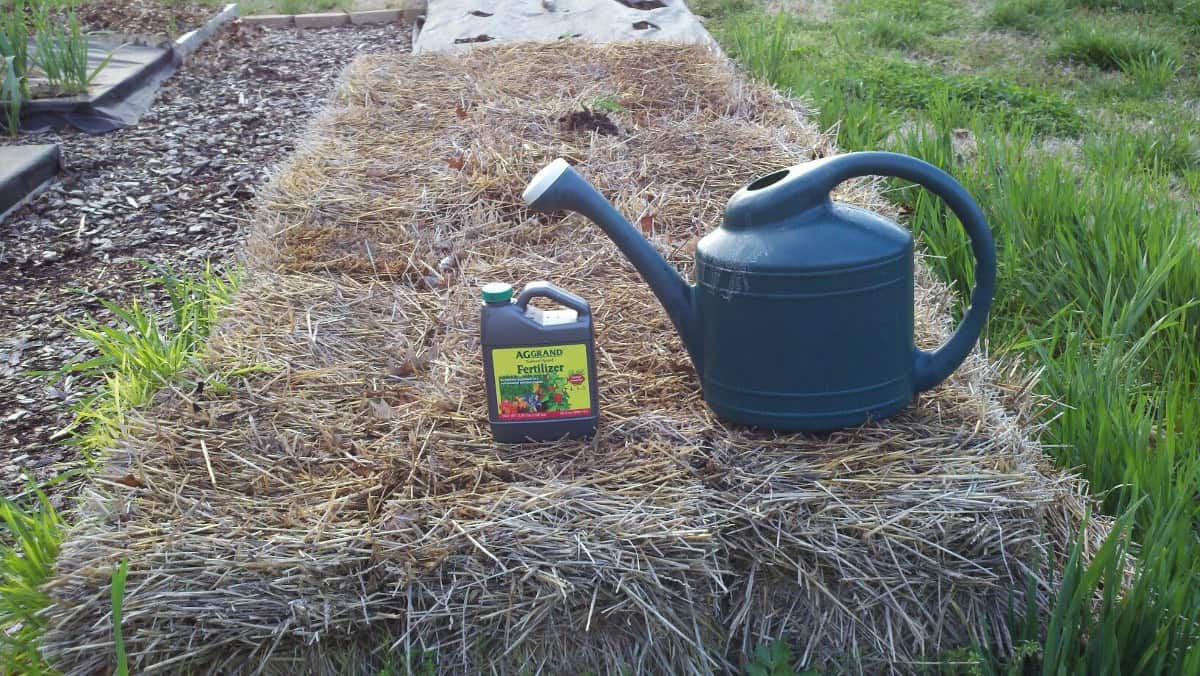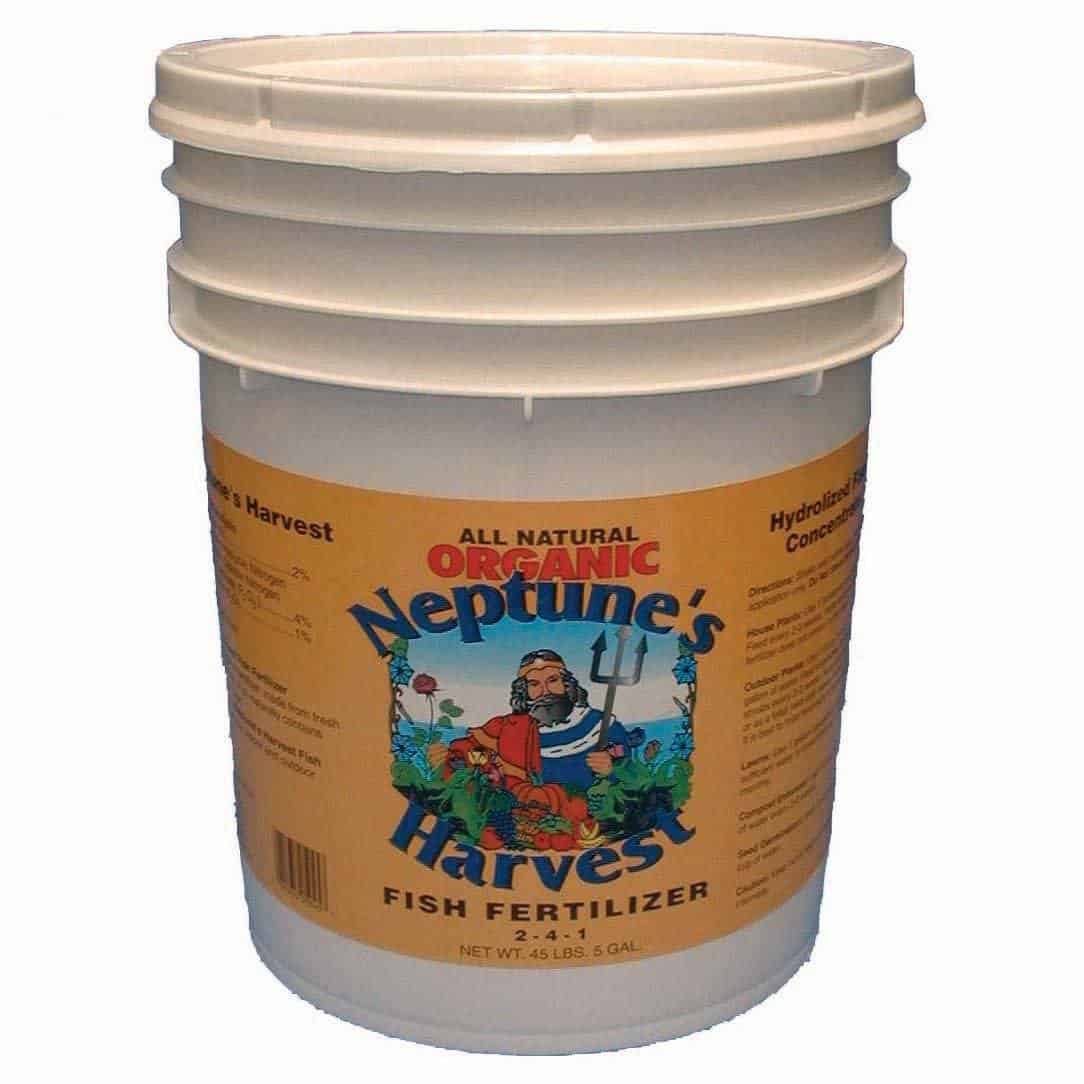Too Busy to Read? Buy Neptune’s Harvest – Click Here
Strawberries have a shallow root system, so they require very careful planning when selecting a growing medium for your new plants. They need a lot of sun and good drainage as well. You should select a location with good soil, and do not be afraid to use lots of mulch. So, considering these conditions, what kind of fertilizer is best for strawberries? Let’s find out and also consider some concerns you might need to address beforehand.

Carbon Levels
Product Recommendation
Application Guide
Specific Applications
Buy Online
The Problem with High Carbon Levels
Remember how we said to heavily mulch your strawberries? Well, our reasoning is moisture retention for the shallow roots. However, this brings its own set of problems. For starters, you also have to keep your soil well drained as well. That’s something you’ll have to figure out for your specific USDA climate zone though. That’s easy. Here’s how you can do it…
Adjust the depth of your top dressing as needed to keep everything in balance. You’ll want to observe moisture levels carefully and adjust based on close observation. If you notice any yellowing, it may be a sign of too much water. Conversely, wilting may be a sign that you need to increase your top dressing to provide better moisture retention. For most locations in the US, an ideal range will be somewhere between 1-2 inches of top dressing. Work out the right balance for your area and you’ll see this in no-time…
Nutrient leaching can be an even bigger problem that watering though, if you’re not careful. Most mulch is carbon rich. Things like wood chips or pine straw have a tenancy to seek balance chemically as they decompose. This means it will readily binds to nitrogen that’s either already present or recently added to the area where your plants are growing.
This isn’t necessarily a bad thing, because it will slowly break down and become available again over time. Having said that, we want our strawberries to get nutrients right away so that they’re off to a good start. If everything they need is depleted by the layer of straw you just added, it could cause issues…All the surface nitrogen gets locked up becoming temporarily unavailable to a root system that can’t seek deeper sources of N. You’ll need a way to get your plants all the N they need right now by supplementing them.
How do we deal with that? Knowing that our mulch might absorb a large amount of liquid fertilizer from the surface, what kind of fertilizer is best for strawberries?
I suppose you could use the fertilizer spikes, but how many plants are you going to cover per spike? I believe you would be hard pressed to treat more than four plants per spike, and that’s not very cost effective at all. Instead, I suggest foliar feeding with Neptune’s Harvest.
Problem Solved! Optimal Fertilization
We absolutely recommend a liquid nutrient applied directly to the leaves. This is known as ‘foliar feeding’. We spray a natural fertilizer directly onto the mature leaves. This allows your plants instant access to the nutrients they need most for development.

Use a Hose End Sprayer like the one pictured above.
Also, we are avoiding the mulch by allowing the strawberry stem to transport the nutrient right past it to the roots. Fertilizing with liquid organic fertilizer is especially important if you recently added new mulch to your beds. Fresh carbon-rich materials like straw or wood chips can pull out nitrogen from the first half inch or so of the topsoil. Since strawberries have such shallow roots, this can cause undue stress just as they’re getting established. Apply Neptune’s Harvest each time you add new mulch. You’ll be glad you did in a few months when you’re enjoying those homemade preserves!
Which Kind is Ideal to use?
Provided you do a round of weeding beforehand, foliar feeding with a liquid sprayer only treats your plants instead of everything in the area. This will save you tons of labor down the road as you continue to reward the foliage you want while disadvantaging everything else. There’s no need to play fair when it comes to weeds!!! [Visit Table of Contents]
Of course!
Use Neptune’s Harvest and apply it directly to the leaves in the early morning. Be careful to follow the manufacturer’s instructions on mixing closely. It’s super-efficient and highly concentrated stuff!
Conversely, if you do a soil application, you are potentially fertilizing all those upstart weeds trying to compete with your strawberries. This is just another reason why Neptune’s Harvest might be the best answer to our question. What kind of fertilizer is best for strawberries? We definitely want a product that provides near-instant nutrients at an affordable cost. Equally important is the fact that we are only treating the plants that we want to be in the area, and not wasting it on weeds!

Application of Neptune’s Harvest Fertilizers for Strawberry Beds
Below you will find three sets of specific growing instructions. We also have links to the specific items we recommend you buy. You can choose the application method that’s right for you by keeping the information mentioned above in mind. Remember, we always prefer foliar feeding when conditions permit. It’s a more efficient way of doing thing, and should help you save some money.
Follow that schedule and your patch will look like this in a few short weeks-
Root Applications Per-acre mix ratio:
First, mix 2 gallons Neptune’s Harvest and 50 gallons of water. Then apply once a month during growing season. Optimize results by adding 1 quart Liquid Kelp to the mix. Over time, this will build soil biology. All those microbes will be busy unlocking nutrients already in the soil. Over time, your plants should need less organic fertilizer as the soil bacteria start to work their magic. [Visit Table of Contents]
Specific ratios:
- 2 gallons Neptune’s Harvest
- 50 gallons water
- 1 quart kelp
Foliar Applications Per-acre mix ratio:
Mix 1 gallon Natural Liquid Fertilizer and 50 gallons of water. Next, apply as a fine mist after leaves open and again after first bloom. Now combine 2 quarts Liquid Kelp and 50 gallons of water. Apply during fruit formation up to three weeks before final harvest. Rates vary according to soil fertility and other inputs. Hence, higher dilution rates are more effective than lower dilution rates. So, two or three lighter applications may be more effective than one heavy application. Do not exceed a 3 percent dilution rate (3 gallons of fertilizers to 97 Gallons of water).
Specific ratios:
- 1 gallon Neptune’s Harvest
- 50 gallons water
- 2 quarts kelp
Soil Applications Per-acre mix ratio:
Begin with 2 gallons Natural Fertilizer and 50 gallons of water. Apply in spring and fall if soil is hard and low in organic matter. You should optimize results by adding 2 gallons Liquid Bonemeal, 1 quart Kelp and 25 gallons of water to the mix. Now you’re ready to plant strawberries! You know what kind of fertilizer is best for strawberries. So, get to it!
If you like what you read, feel free to share! We have a full catalog of growing guides on everything from potatoes to Christmas trees!
Visit our Store!
Be sure to check out our other useful guides and tips available on our site. We’re here to help you make the most of the outdoors with our carefully curated list of recommended products available for home use. We’re Fertilizer-for-Less.


